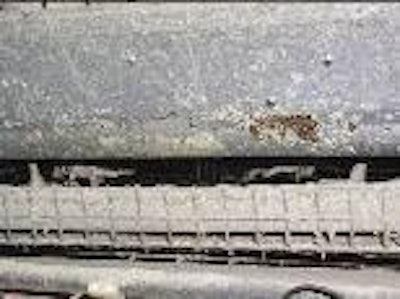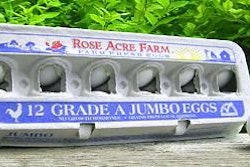
Some farms still operate with a "traditional" maintenance strategy responding to breakdowns as quickly as possible and getting the system operating again by any expedient method. This is a potentially costly and inefficient approach.
First, there will surely be subsequent breakdowns. Over a 20-year period for any given mechanical component, annual breakdowns can gradually increase by a factor of 10 without effective preventive measures. Second, equipment life is greatly reduced by repeated repairs. Third, the cost of each repair becomes progressively higher, especially when failure causes collateral damage to other parts.
Eternal vigilance
Breakdowns can be reduced by making sure the personnel working in the pullet and hen houses have the same priorities regarding operation as those responsible for the grading and packing machinery of the complex.
For instance, neglecting obvious problems such as rollers packed with feathers or working with obsolete drinkers will eventually cause items to fail or wear out prematurely. Expensive replacement of components can result from a shortened product life.
When moisture from a poorly maintained cooling pad, for example, is allowed to spray droplets on a metal surface rust eventually makes replacement necessary. Failure to keep metal feeders, egg belts and manure belts properly adjusted can lead to feed wastage, egg damage, and tearing of expensive manure belts.
Types of maintenance
There are several types of maintenance:
Predictive maintenance uses historical data to build a schedule of routine tasks intended to keep equipment at optimum performance. These might include lubrication of bearings, inspecting and adjusting egg belts and replacing water filters.
Preventative maintenance goes a step beyond predictive maintenance by replacing parts before they fail. Typical measures would include replacing fan belts or gas heater jets.
Corrective maintenance is the repair of a part that has already failed or is about to fail, such as replacing a motor or patching damaged feed trough.
Failure-finding maintenance involves a safety check to make sure a system will work when needed. Testing alarms, back-up electrical generators or running egg conveyors before collection are examples of this activity.
Housekeeping, a complement to maintenance, involves keeping systems free of harmful contaminants, debris and dirt.
Establish a formal program
To develop a formal program, generate a list of critical preventative maintenance measures. Begin by gathering the instruction manuals for the various parts of the system. Most manuals contain scheduled maintenance advisories.
Identify all maintenance and safety decals that appear on equipment such as lubrication and cleaning directions. Contact the equipment manufacturer to obtain their latest recommendations.
Finally, and most important, consult with supervisors and workers who are an excellent source of ideas based on their familiarity with operations. They know from experience which components tend to wear out, break, need adjusting or cleaning most often.
Develop a maintenance chart
Once all the information is gathered, prepare a chart. Tailor the chart to fit the facility, equipment and experience of personnel who will conduct the maintenance.
The various tasks and activities should be listed in the left-hand column. The frequency of the activity is then noted in one of the subsequent columns. The frequency of each job is specified as to daily, weekly, monthly or interflock intervals.
The name or title of the person responsible for each activity should be indicated and a space should be provided for an initial and date indicating when the task is complete.
The chart should be posted in a prominent place such as the farm office or breakroom. If employees are not proficient in English, post the chart in their language to ensure understanding.
Why housekeeping matters
Good housekeeping denotes an acceptable standard of management contributing to efficient operation and biosecurity. Keeping a layer cage system clean extends the life of equipment. Housekeeping issues contributing to early equipment failure include accumulation of dust, flies, manure, moisture and rodents.
Each of these factors impacts the effectiveness of various systems. For example, dirt and fly deposits can reduce light output of lamps by over 30%. Dirt around electrical components can lead to short circuits and fires.
The key to a good program of housekeeping is to develop a fixed work schedule. List all tasks, estimate the length of time needed for each activity, determine priority and decide on frequency for the various functions.
Since housekeeping is important to continued operation of equipment and flock health, this activity should not be relegated to a "do if time permits" status. Recognize the cost of housekeeping in the operational budget and include all labor, cleaning equipment and supplies.
Training is important
Establish a formal training program. Emphasize the importance of the program to each employee, and be sure that new employees receive adequate orientation.
Reinforce compliance with compliments for good work and constructive criticism where improvement is needed. Employees should be empowered to take an active role in housekeeping and maintenance and to accept responsibility for the company standard. Some equipment manufacturers or their representatives are willing to participate in training sessions.
Keep good records
Documenting equipment problems in accessible failure and maintenance logs will shorten the time needed to correct a problem and prevent future breakdowns.
A factory service representative can help troubleshoot a breakdown more quickly if details are provided about what, when and where the problem occurred, along with any history of similar failures. Valuable time is lost if information is sketchy.
Failing to identify the primary cause of an isolated or recurring problem will likely lead to subsequent failures.
Maintenance logs that are signed and dated when activities are completed will ensure that critical preventative maintenance has been performed.
If a pattern of breakdowns emerges, documentation will help identify necessary changes to the program.
Audit to maintain program
No program can be sustained without a periodic review of effectiveness. An annual meeting should be held with key personnel to review the program and devise improvements.
A representative from an equipment manufacturer could be requested to make an inspection of the installation and to offer recommendations.
Use an audit to determine that the program has become an ingrained part of the company culture.
Benefits can be high
The payback ratio from an effective preventative maintenance program can be as high as 7:1. Early warning of potential problems allows for preemptive correction with minimal impact on production.
The costs for overtime needed to deal with weekend emergencies, expedited shipments of parts, and consequential damage to other components can often be avoided.
The useful life of equipment can be extended through good maintenance. Farm operations become more routine and predictable, allowing managers and workers to concentrate on optimizing production efficiency.

.jpg?auto=format%2Ccompress&fit=crop&h=167&q=70&w=250)













